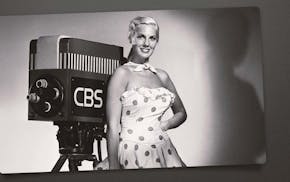It's hard to imagine that a doctor's radar could miss blood clots that clog blood vessels and cut off blood flow to a patient's limbs and abdominal organs.
But that appears to be a problem in the care of patients with atrial fibrillation, an abnormal heart rhythm that slows blood flow and allows clots to form. All the attention in medical training and clinical care is on the clots that thread their way to the brain and create stroke risks, not on the clots that turn south instead, said Dr. Alan Hirsch, director of vascular medicine at the University of Minnesota Medical Center in Minneapolis.
Trouble is, that leaves doctors and patients overlooking clots as the causes of a variety of symptoms — and missing opportunities to treat the clots before they cause disabilities or deaths.
So Hirsh and colleagues tried to raise the alarm by determining the frequency of "extracranial systemic embolic events'' — incidents of obstructed blood flow to limbs or organs other than the brain that cause pain or impairment.
Re-examining data for 37,973 patients with atrial fibrillation from four prior studies, they found plenty of strokes in the largely elderly population, but also 220 events involving blockages outside the brain. One in four of these patients died. One in five were disabled. "It's kind of like, 'Oops, we missed this one,' " Hirsch said of the problem.
Complications can include diminished function or outright failure of organs that aren't getting enough blood, and amputations of limbs that are similarly starved.
"In Minnesota, we lose about 1,200 legs per year," Hirsch said. "It's a lot of legs. People who have an amputation will say its because of my diabetes or smoking … But probably 10 to 30 percent of those amputations would not have happened if a clot had not formed and gone to the leg."
Hirsch hopes his study, published this month in the journal Circulation, will cause patients with atrial fibrillation to report more bodily symptoms, and doctors to understand the potential link to circulatory clots.
"It's a two-way communication," he said, "that should improve."

Twin Cities native Dolores Rosedale, glamorous '50s TV model and actress, dies at 95

Donald Trump talks inflation, Iron Dome, Biden and bacon at Minn. GOP dinner


